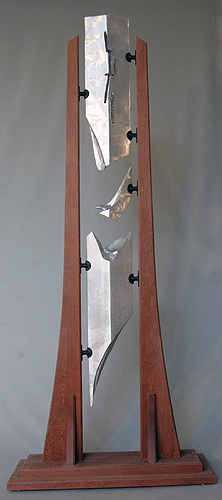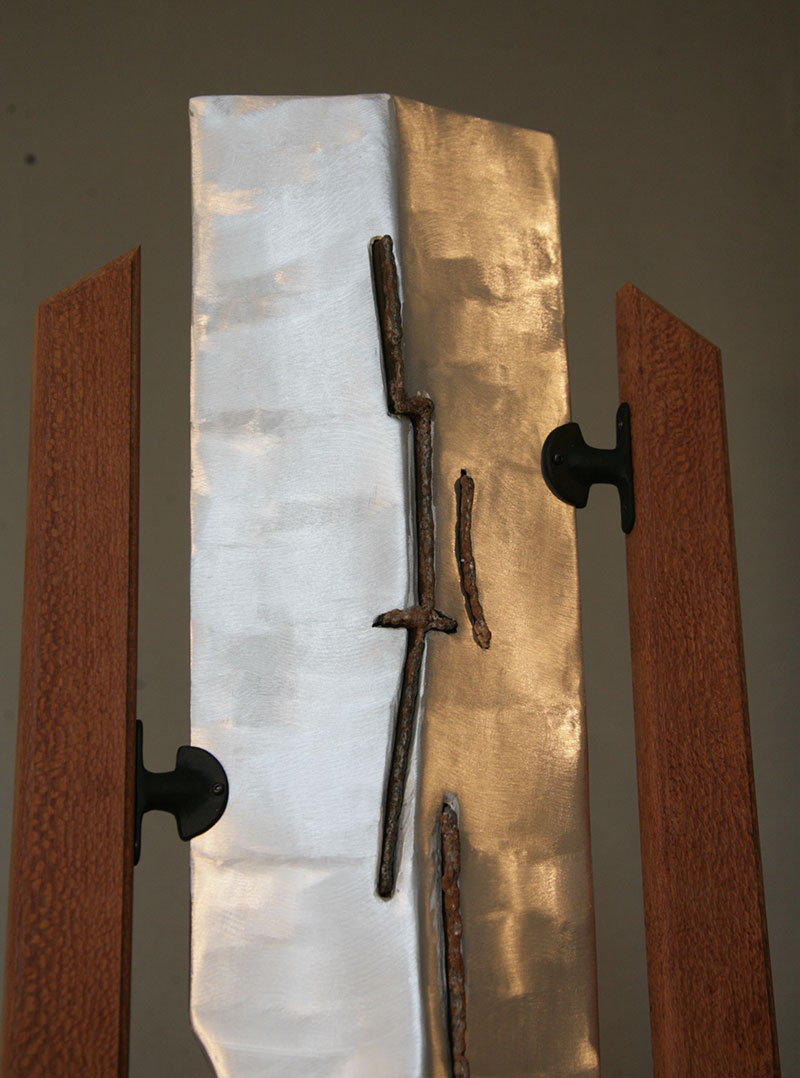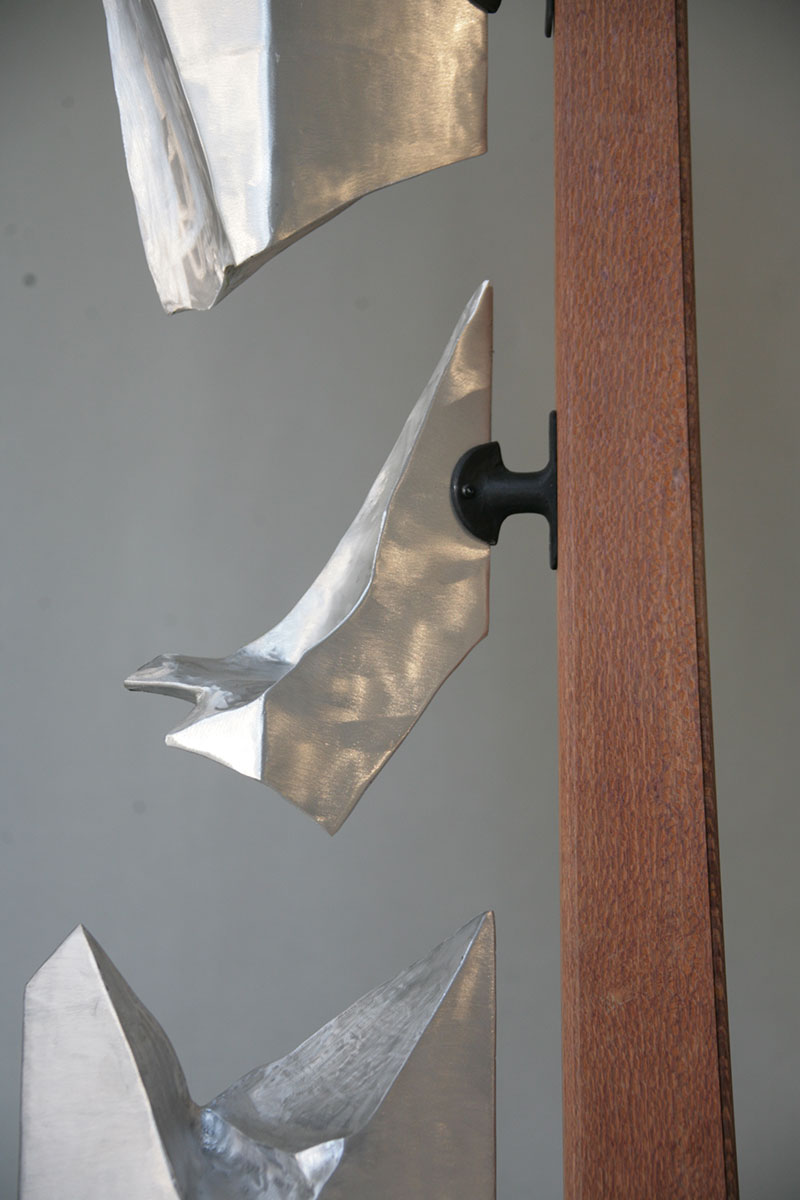Euthesauros 4
The pieces in this sub series, like all members of series Piesterion, have as their intellectual foundation the ice cores drilled out of the Greenland and Antarctic caps and glaciers worldwide. Through their contributions, we know as much, if not more, about paleoclimates than we do about the present. Whatever ability we have to predict comes from our detailed understanding about the past.
More InformationThis sub series differs in several ways from other members of series Piesterion, which have generally been freestanding and outdoors. These pieces are intended for display indoors, and the metalwork– the symbolic cores– are not self supporting but are held in position by the wood frames. These latter are intended to refer to somewhat outdated museum mounts, perhaps from the time of Victoria when the polar regions were beginning to be explored in earnest. Geographical exploration at that time loomed huge in the public consciousness, and was often considered a science, somewhat akin to space travel today.
The illuminated glass zones can be thought of as anomalies in the ‘core’ structure, and could ‘explain’ why the fractures occurred where they did.
Taken together, the implications are that the ‘cores’ are deemed to have great value, despite their deteriorated and obviously fragile condition. This in turn magnifies the perceived value and criticality of the information embedded therein. The meaning of the suggestion that ice could or should be in a museum is self-evident.
Euthesauros means literally ‘good treasure’, but in Greek it has the overtone of preciousness and careful storage.


